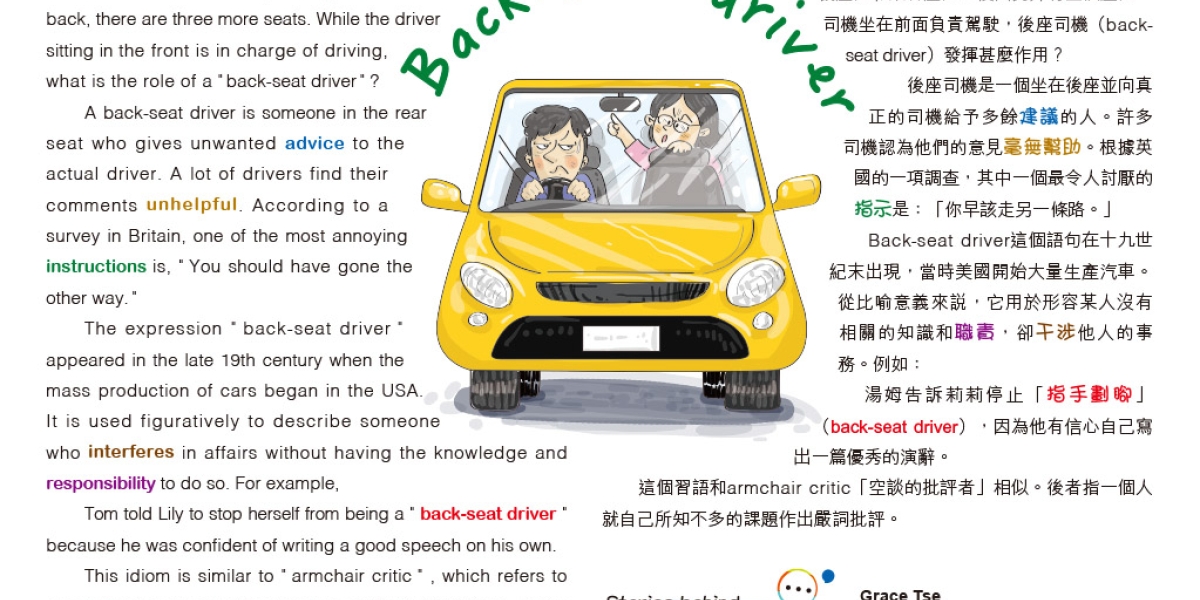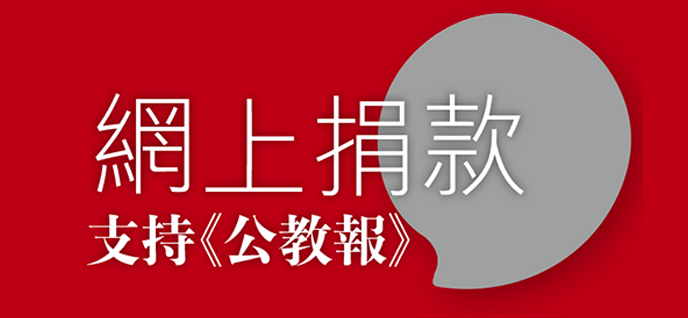
Back-seat driver
Most cars have five seats. In the front, there are the driver's seat and the passenger's seat. In the back, there are three more seats. While the driver sitting in the front is in charge of driving, what is the role of a " back-seat driver " ?
A back-seat driver is someone in the rear seat who gives unwanted advice to the actual driver. A lot of drivers find their comments unhelpful. According to a survey in Britain, one of the most annoying instructions is, " You should have gone the other way. "
The expression " back-seat driver " appeared in the late 19th century when the mass production of cars began in the USA. It is used figuratively to describe someone who interferes in affairs without having the knowledge and responsibility to do so. For example,
Tom told Lily to stop herself from being a " back-seat driver " because he was confident of writing a good speech on his own.
This idiom is similar to " armchair critic " , which refers to a person who speaks critically on a subject of which he or she knows little about.
大多數的汽車有五個座位。前面有司機座位和乘客座位;後面另外有三個座位。司機坐在前面負責駕駛,後座司機(back-seat driver)發揮甚麼作用?
後座司機是一個坐在後座並向真正的司機給予多餘建議的人。許多司機認為他們的意見毫無幫助。根據英國的一項調查,其中一個最令人討厭的指示是:「你早該走另一條路。」
Back-seat driver這個語句在十九世紀末出現,當時美國開始大量生產汽車。從比喻意義來說,它用於形容某人沒有相關的知識和職責,卻干涉他人的事務。例如:
湯姆告訴莉莉停止「指手劃腳」(back-seat driver),因為他有信心自己寫出一篇優秀的演辭。
這個習語和 armchair critic「空談的批評者」相似。後者指一個人就自己所知不多的課題作出嚴詞批評。

捐款支持公教報 http://kkp.org.hk/donation







